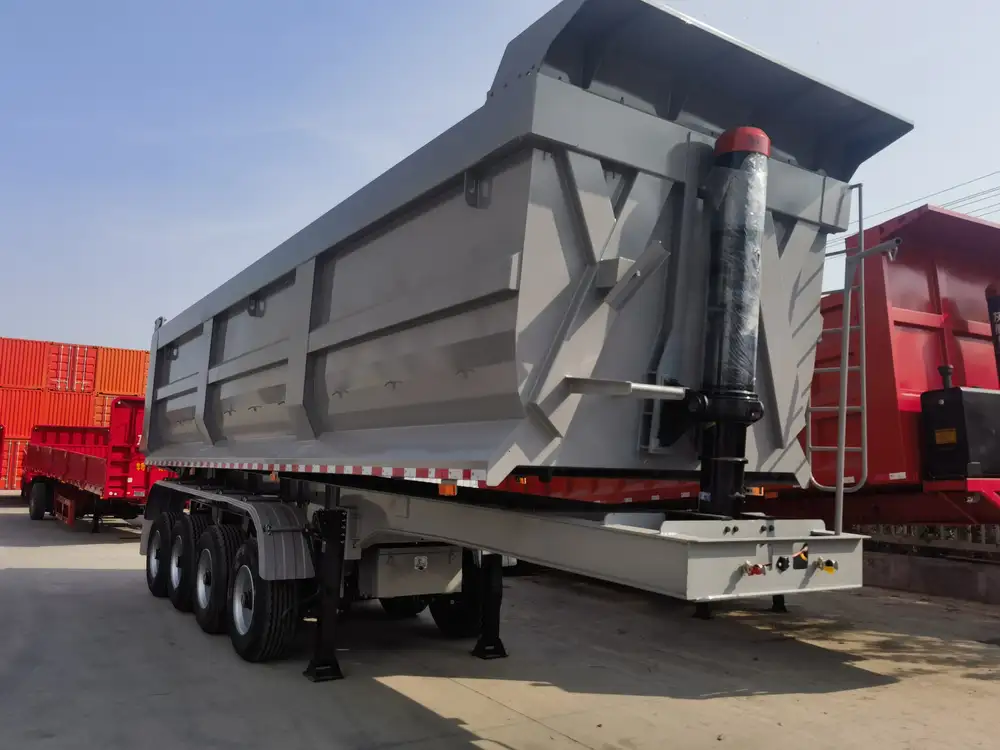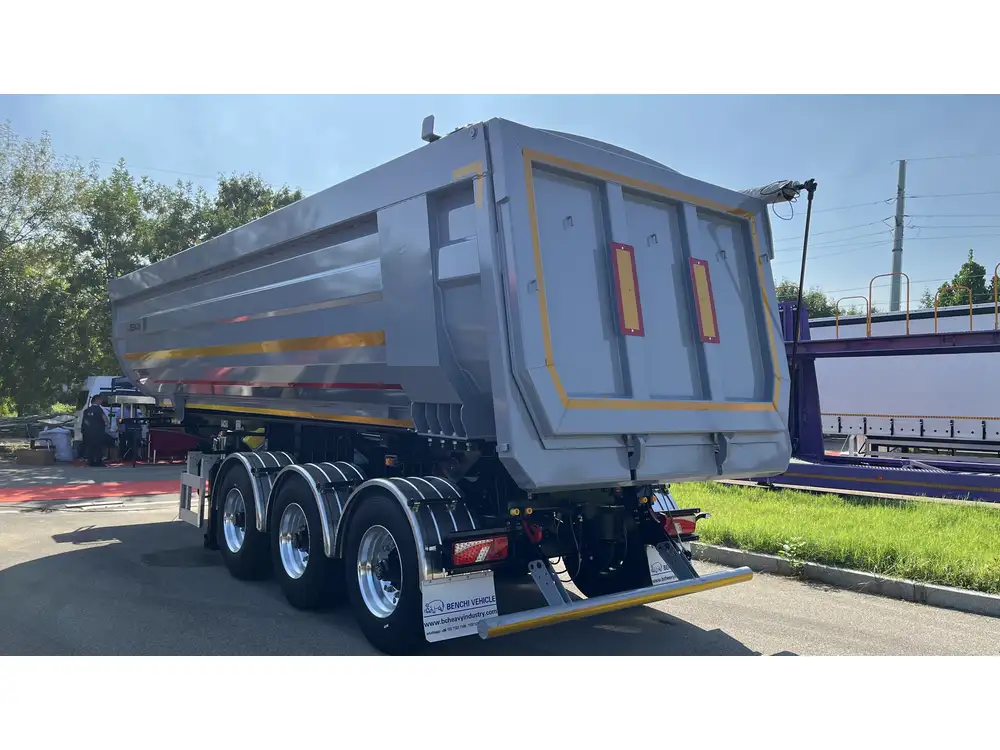In the world of semi-trailer maintenance, one of the often overlooked yet crucial components is the door. The doors of a semi-trailer play a vital role in ensuring security, easy access, and the protection of cargo. When considering the need to replace semi-trailer doors, various factors must be taken into account, ranging from operational efficiency to regulatory compliance. This comprehensive guide will dissect the process of replacing semi-trailer doors, addressing both common challenges and intricate details that can make the task at hand smoother and more realistic.
Understanding the Importance of Semi-Trailer Doors
Key Functions of Semi-Trailer Doors
Before delving into the specifics of replacement, it’s essential to understand why semi-trailer doors matter:
- Security: Doors are the first line of defense against theft, tampering, or damage.
- Accessibility: Efficient door operation is crucial for loading and unloading cargo.
- Protection from Elements: Well-fitting doors protect goods from rain, snow, dust, and other environmental factors.

Types of Semi-Trailer Doors
Knowing the type of door you are dealing with is crucial for a successful replacement. Semi-trailer doors predominantly fall into a few categories:
- Swing Doors: These operate on hinges and open outward. They are common for refrigerated and dry freight trailers.
- Roll-Up Doors: These can be opened and closed with minimal effort, rolling up into a compact space. Common in delivery trucks.
- Panel Doors: Also known as “conventional doors,” these typically have multiple panels and offer limited options for loading large items.
Each type comes with its unique advantages and challenges, and thus, recognizing which one your trailer employs is foundational for a seamless replacement procedure.
Signs It’s Time to Replace Your Semi-Trailer Doors
Before proceeding with a replacement, recognizing the red flags is crucial. Here are several signs indicating the need for new doors:
| Sign of Wear | Description |
|---|---|
| Rust and Corrosion | Visible rust or deterioration can compromise the integrity of the door. |
| Difficulty in Operation | If the doors are not opening or closing smoothly, it may signal mechanical failure. |
| Weather Sealing Issues | Gaps, leaks, or a poor seal can lead to damage to the cargo. |
| Structural Damage | Dents, cracks, or warping may impair functionality. |
| Age of the Door | Older doors (often over 10 years) may lack modern efficiencies and safety measures. |
Assessing the Cost of Replacement
Financial considerations are always paramount. The cost of replacing semi-trailer doors varies widely based on several factors, including:
- Type of Door: Swing doors will usually cost differently compared to roll-up options.
- Material Used: Aluminum, steel, and composite materials have varying price points.
- Labor Costs: Professional installation services incur additional fees.
- Custom vs. Standard: Custom doors may significantly increase costs, whereas standard sizes and designs tend to be cheaper.
Understanding these variables will provide a more comprehensive picture of the financial impact before undertaking this task.

Preparation: Tools Required for Replacement
When you’ve assessed that a replacement is necessary, having the right tools is essential. Here’s a detailed list:
| Tool | Purpose |
|---|---|
| Wrenches | For unfastening bolts and nuts on door hinges. |
| Screwdrivers | Needed for various fastening screws. |
| Utility Knife | Helpful for cutting through seals or areas needing adjustment. |
| Measuring Tape | To ensure accurate measurements before ordering new doors. |
| Hammer | For aligning or adjusting door fittings. |
| Level | To check that doors fit evenly. |
| Safety Gear | Gloves, goggles, and steel-toed boots are essential for personal safety. |
The Process of Replacing Semi-Trailer Doors
Replacing semi-trailer doors isn’t just about swapping out old for new; it involves a systematic approach. Here’s a step-by-step guide to ensure thoroughness:
1. Assess the Current Setup
Before commencing, examine the current door mechanism. Take detailed measurements, focusing on height, width, and any additional features (like locking systems). Document possibly unrecognizable elements that may complicate your replacement process.

2. Purchase New Doors
Based on the initial assessment and measurements, source your replacement doors. Some aspects to ensure:
- Quality: Look for durable doors crafted from reliable materials.
- Fit: Confirm compatibility with your semi-trailer’s specifications.
- Manufacturer Recommendations: Follow any guidelines provided by the semi-trailer manufacturer for optimal fit and performance.
3. Remove Old Doors
With your tools in place, begin removing the old doors. Follow these steps:
- Detach the Hinges: Use wrenches to carefully unscrew the hinges and detach the door from the frame.
- Remove Seals: Carefully cut old weather seals with a utility knife to expose any hidden screws or fastenings.
- Inspect the Frame: As you remove doors, check the frame for any cracks or warpage that might necessitate additional repairs.
4. Install New Doors
Now that the old doors have been removed, it’s time to install the new ones. Here’s how to proceed:
- Position the New Door: Align the door with the existing frame.
- Attach Hinges: Secure the new door to the frame using the previously removed hinges. Tighten them, ensuring all screws are properly fastened.
- Adjust the Door: Use a level to confirm that the door is perfectly aligned. Adjust as necessary before finishing attachment.

5. Apply Weather Seals
New weather seals must be installed to ensure proper insulation and protection of cargo. Here’s how:
- Cut to Size: Measure and cut the weather seals adequately.
- Attach: Firmly press the seals into place around the edges of the door frames to prevent air, moisture, and dust ingress.
6. Conduct Final Checks
Conduct a thorough inspection of the door mechanism:
- Open and Close: Check that the door operates smoothly without obstruction.
- Test Locks: Ensure locking mechanisms function correctly for security.
- Final Adjustments: Make any necessary adjustments to the hinges or seals.
7. Inspect for Damage
After installation, it’s essential to double-check for any hidden damage or misalignments. Confirm the integrity of both the doors and their functioning, ensuring they’re ready for immediate use.

Maintenance Tips for Prolonged Door Lifespan
Proper maintenance can extend the lifespan of semi-trailer doors significantly. Here are practical tips:
- Regular Inspections: Schedule routine checks for rust, warping, or mechanical issues.
- Lubrication: Periodically lubricate hinges and locks to ensure smooth operation.
- Weather Seal Replacement: Replace seals annually to maintain insulation integrity.
- Cleaning: Clean the doors regularly to prevent dirt accumulation leading to damage.
Conclusion
Replacing semi-trailer doors is not an insurmountable task, but it does require attention to detail, proper tools, and a methodical approach to ensure a successful transition from old to new. By following the comprehensive and structured guidelines laid out in this article, manufacturers and operators can effectively manage the replacement process. The focus on quality, precision, and maintenance will not only enhance operational efficiency but also contribute positively to the longevity and functionality of any semi-trailer.
This ongoing commitment to maintaining one’s equipment is paramount in the transportation industry, playing a significant role in ensuring cargo security and safeguarding against unwanted losses.



